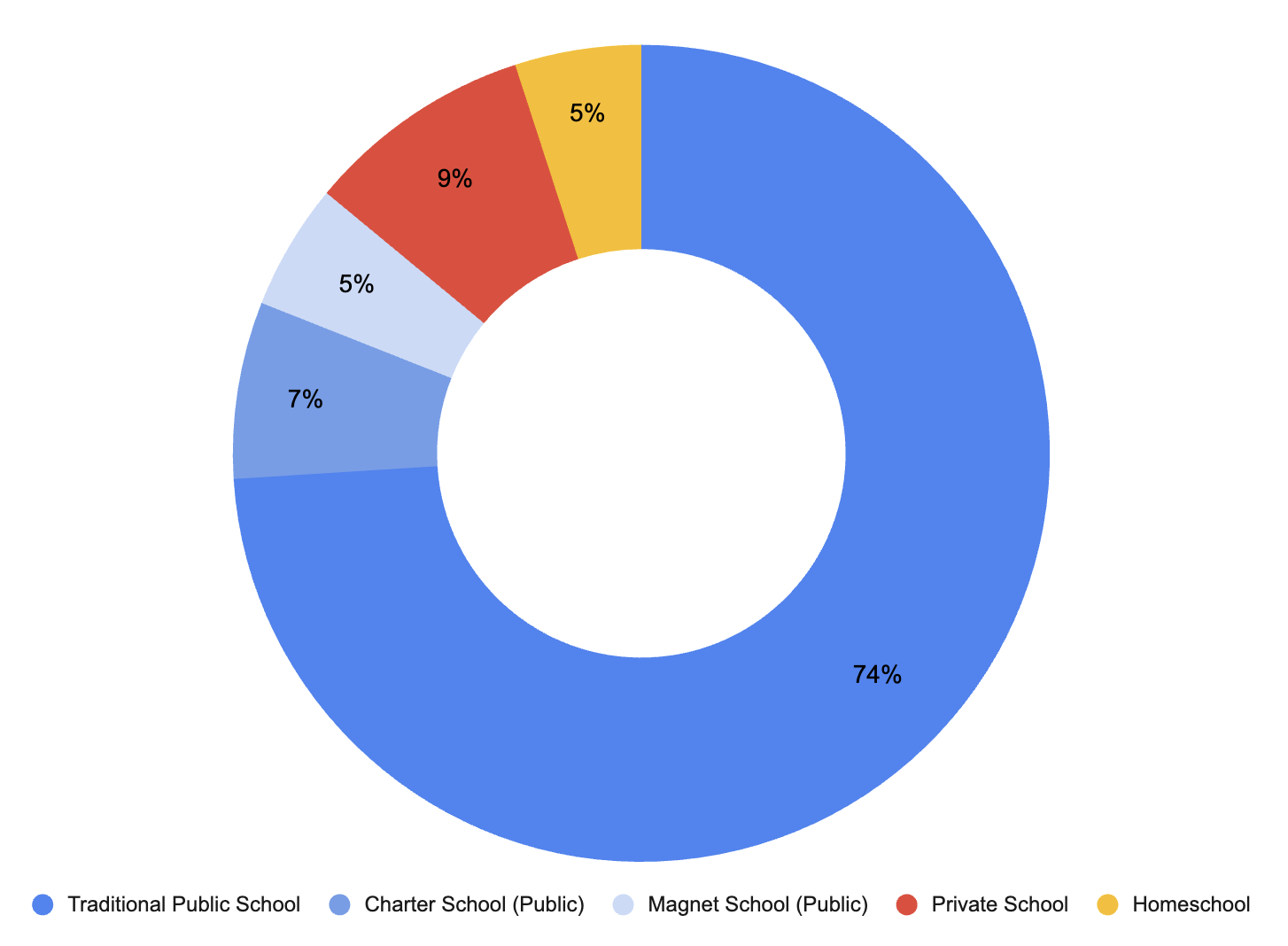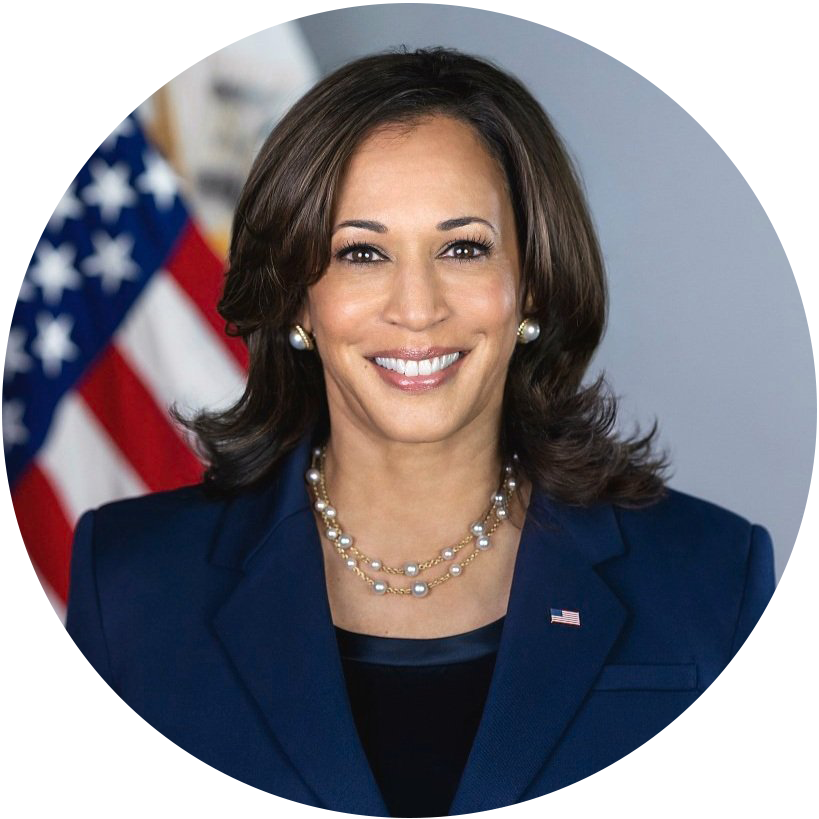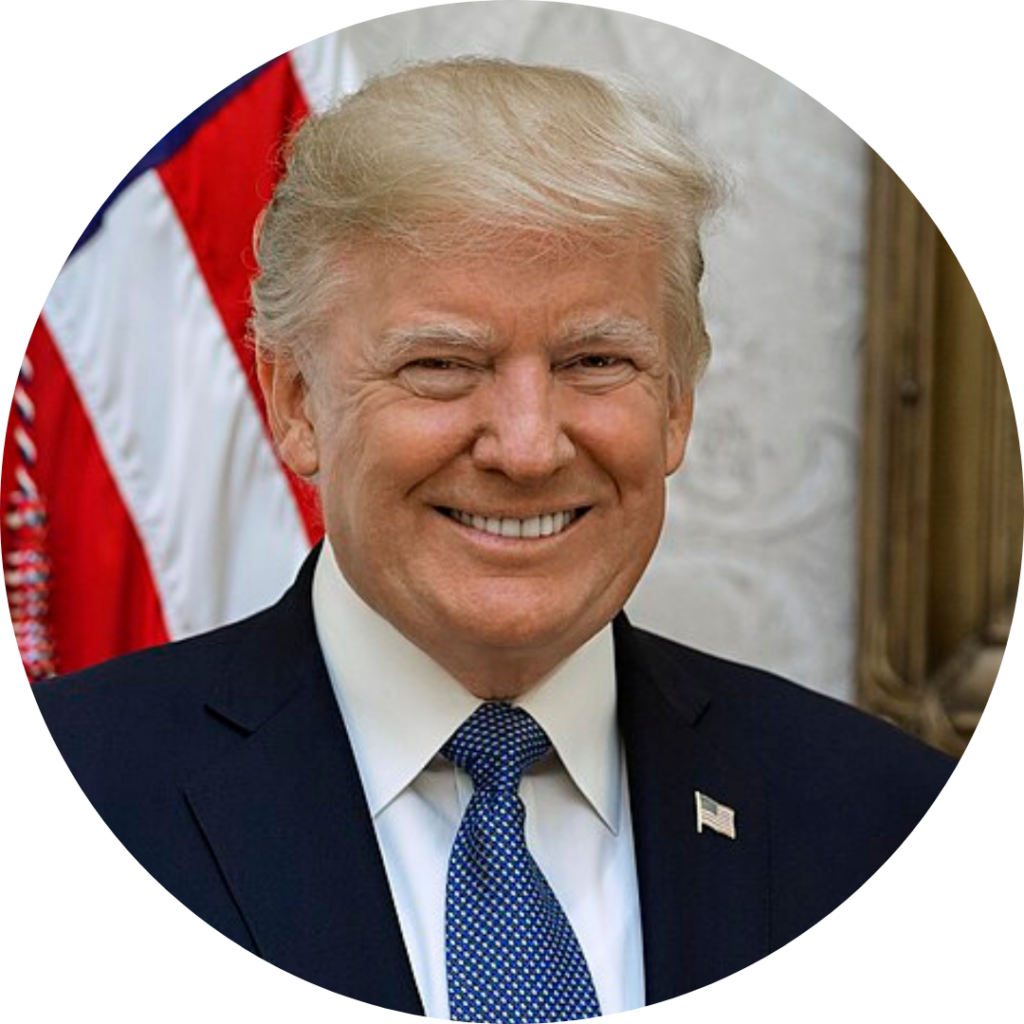In the years since 2020, American discontent with K-12 public education has spread like a case of classroom lice. In 2019, 51% of Americans were “completely” or “somewhat satisfied” with the quality of public school education; in 2023, that number dropped to 36%.
One outcome of this discontent has been increased debate over school choice.
Federal Government Revenue by Source in 2023

Source: edchoice.org, 2024
In a traditional school system, taxes go toward funding local public schools. With school choice programs, public funding “follows the child” so that parents receive financial help if they choose to opt out of their local assigned public school in favor of a private or homeschool option.
As of 2024:
- 71% of Americans support some form of school choice
- 32 states plus Washington, D.C., have at least one school choice program
- 1.9% of American students use school choice programs
Both Sides
The Republican Party platform calls for universal school choice, arguing it empowers parents to educate their children based on what system (religious, academic, or otherwise) they believe is best for their child. Republicans argue school choice opens the door to more expensive, academically rigorous education for children in low-income families and creates healthy accountability for schools. They believe the money parents pay to public schools through taxes should be allowed to “follow the child” and be applied to private schooling.
Democrats generally advocate for increasing public school funding to raise teacher salaries, lower class sizes, renovate schools, and boost academic performance. Democrats are somewhat divided on school choice; while 66% are in favor, others believe that school choice undermines the public school system, leaving poorly funded schools—often attended by racial minorities—even worse off. They argue that taxpayer money should not go to high-income-earning families or religious private schools.
Terms to Know
School choice programs come in different policy shapes and sizes. Here are a few key terms to know:
- Charter Schools. The OG school choice for parents; charter schools are publicly funded schools that don’t have the same curriculum or methodology requirements as traditional public schools. Some focus on certain disciplines, like the arts or STEM. Admission is by application (and usually lottery), but tuition is free.
- Magnet Schools. Like charter schools, magnets are public schools with specialized curriculum and free admission, but enrollment is based on a competitive admissions process.
- Education Savings Accounts (ESAs). The government allocates money into an account that parents can spend on a variety of approved education expenses, like tutoring, textbooks, homeschooling supplies, or tuition. Leftover funds can rollover and pay for future expenses like college. Available in 17 states.
- Individual Tax Credits and Deductions. Parents pay for their kids’ school expenses and then claim those expenses as a credit or deduction on their income taxes. Available in 10 states.
- School Vouchers. Allow parents to access all or part of the public funding set aside for their child’s education to put towards private school expenses. Parents choose a private school (whether religious or non-religious), admit their child, fill out paperwork, and the government contributes to tuition (drawing from income and sales tax revenues). Available in 16 states (plus D.C. and Puerto Rico).
- Tax-Credit Scholarships. Taxpayers receive full or partial tax credits when they donate to nonprofits that provide scholarships to private schools. Available in 20 states.
Candidate Stances

Vice President Harris advocates for raising funding for public schools. She calls for increasing federal funding for schools serving low-income and disabled students and supporting programs like Head Start (subsidized preschool for low-income children). In 2019, she called for $13,500 raises for teachers and has pushed for more funding for Historically Black Colleges and Universities (HBCUs).

Former President Trump supports school choice, calling it “the civil rights statement of the year” in 2020 because “a child’s zip code in America should never determine their future.” His administration’s “Tax Cuts and Jobs Act” allows parents to use funds from a 529 savings account to cover K-12 tuition. Trump supports funding vocational training and Historically Black Colleges and Universities (HBCUs) and keeping controversial “culture war” content out of the curriculum.
Eternal Perspectives
The government has different priorities than Christians do. While politicians seek to settle the who and how of education’s invoice, believers remember that our ultimate teaching goal is to make disciples who love the Lord and love others.
“Love the Lord your God with all your heart, with all your soul, and with all your strength. These words that I am giving you today are to be in your heart. Repeat them to your children. Talk about them when you sit in your house and when you walk along the road, when you lie down and when you get up. Bind them as a sign on your hand and let them be a symbol on your forehead.”
Deuteronomy 6:5-8 (CSB)
This is part of our Election Collection articles series, created to help Christians grow in understanding and compassion on key issues surrounding the 2024 presidential election.
Last Updated: September 17, 2024


